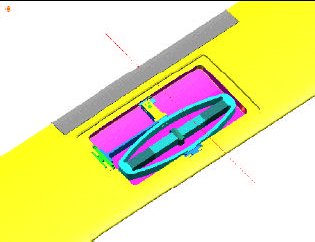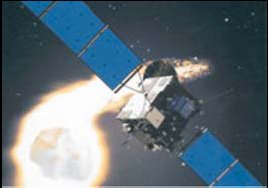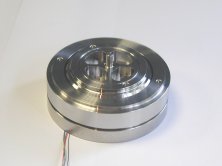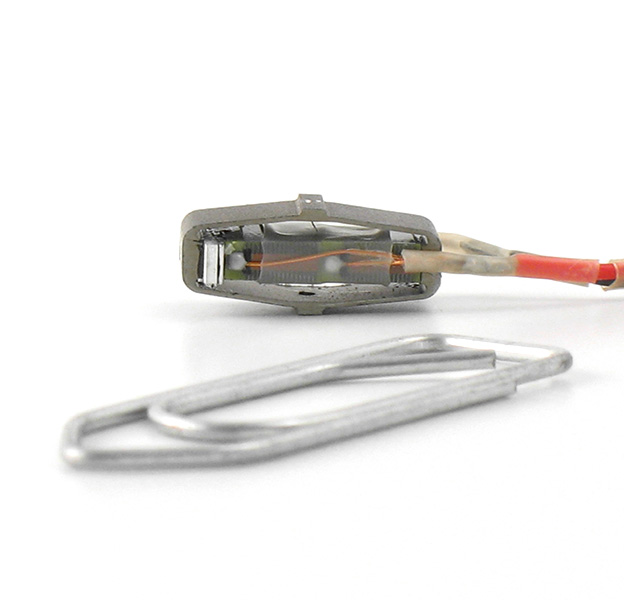Publications
Categories
- (34)
- (9)
- (3)
- (144)
- (18)
- (7)
- (5)
- (8)
- (9)
- (17)
- (2)
- (104)
- (7)
- (15)
- (7)
- (2)
- (1)
- (6)
- (155)
- (20)
- (2)
- (5)
- (111)
- (35)
- (11)
- (4)
- (59)
- (18)
- (3)
- (7)
- (62)
- (18)
- (5)
- (24)
- (7)
- (12)
- (1)
- (2)
- (2)
- (1)
- (1)
- (14)
- (13)
- (4)
- (6)

Experimental assesment and further development of amplified piezo actuators for active flap devices
6 January 2002
RPA (Rotor à Pales Actives) Franco-German project was launched three years ago to study the possible benefits of implementing active trailing edge flaps on a helicopter main rotor. The main expected effects concern the decrease of BVI noise in descent flight and the improvement of the dynamic behaviour of the rotor throughout the largest possible flight domain. The technological solution adopted to deflect the flap of an 1/3rd scale rotor demonstrator, uses an off-the-shelf elliptic amplified actuator, from Cedrat Recherche Company, driving an innovative patented mechanism.

Experimental assessment of an active flap device
5 January 2002
During the past thirty years, noticeable consideration has been devoted to the improvement of rotary-wing vehicles, with respect to noise, vibrations and performance. The main rotor of helicopters, and more precisely the blades themselves have been the subject of numerous optimization studies.

Extreme performance of piezo system: High stroke, high frequency, high temperature
19 June 2023
This paper presents research and development results of the high performances piezoelectric actuators. Performed studies were concentrated on the improvement of three major parameters: stroke, maximum driving frequency and operational temperature. Two, new actuators were presented and described in this paper. First presented actuator has increased maximum displacement. This actuator has doubled the stroke of standard, long stroke actuators. Improvement of the second actuator was concentrated on increase of constant driving frequency. Finally, special encapsulations designed for both actuators allow using them at high temperatures. Development of these two, new actuators was done simultaneously to the improvement of the electronics. High power amplifier presented in this paper provides sufficient current to drive both actuators at high frequencies.

Rosetta Midas successful launching
19 June 2023
Successful commissioning of the first flight application for C. T. in ESA / ROSETTA mission. The ROSETTA satellite has been successfully launched the 2nd of March 2004 from Kourou, French Guyana, using an Ariane-5 G+ launcher. The rendezvous with the new targeted comet “Churyumov – Gerasimenko” is expected in November 2014.

Rotating piezo actuator for high accuracy positioning in space applications
7 January 2002
Piezo-electric motors have been successfully developed for various applications like autofocus drives in camera lenses and handling equipment for semiconductor production. Their high speed and accurate positioning capability, combined with a favourable holding torque in unpowered condition, make piezo motors also very attractive for actuation purposes in spacecraft mechanisms. However, so far only a few studies have been reported considering their suitability for actual use in space.

Active control of the spatial MRI phase distribution with optimal control theory
7 November 2019
This paper investigates the use of Optimal Control (OC) theory to design Radio-Frequency (RF) pulses that actively control the spatial distribution of the MRI magnetization phase. The RF pulses are generated through the application of the Pontryagin Maximum Principle and optimized so that the resulting transverse magnetization reproduces various non-trivial and spatial phase patterns. Two different phase patterns are defined and the resulting optimal pulses are tested both numerically with the ODIN MRI simulator and experimentally with an agar gel phantom on a 4.7 T small-animal MR scanner. Phase images obtained in simulations and experiments are both consistent with the defined phase patterns. A practical application of phase control with OC-designed pulses is also presented, with the generation of RF pulses adapted for a Magnetic Resonance Elastography experiment. This study demonstrates the possibility to use OC-designed RF pulses to encode information in the magnetization phase and could have applications in MRI sequences using phase images.


